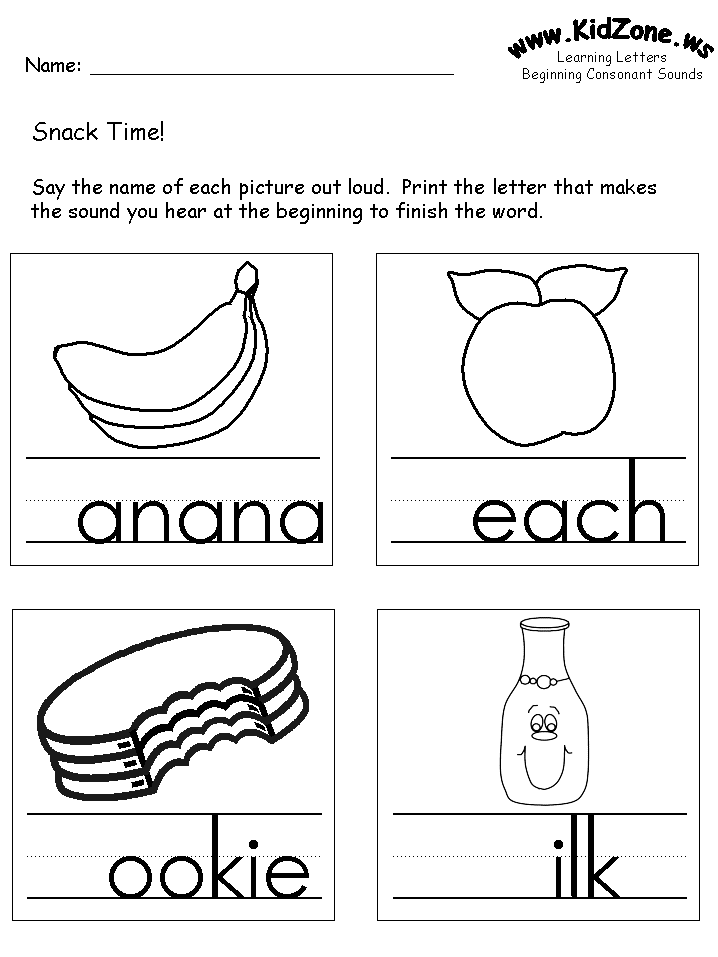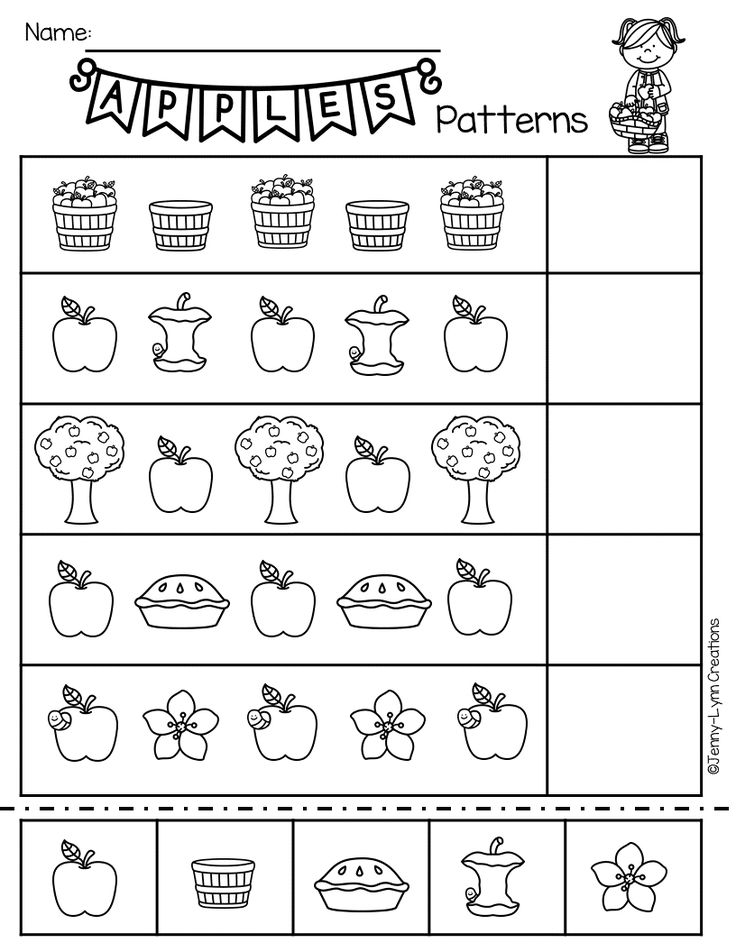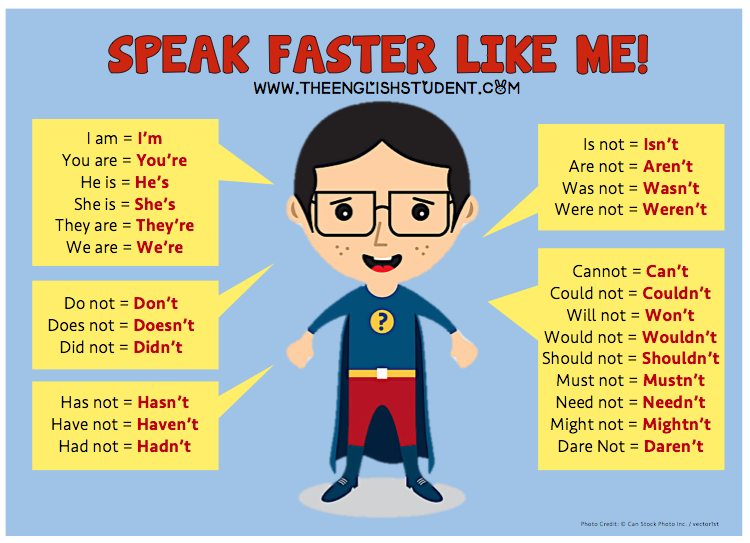Teach compound words
The 8 Best Compound Word Activities You Need to Try
What do meatballs, butterflies, and cowboys have in common? Not much unless you are teaching compound words to your students this week. This topic can be so fun to teach because of the many different ways you can approach it. Whenever possible, I try to make sure all types of learners’ needs can be met through teaching and activities. I put together a list of some of my favorite compound word activities.
Some of these activities are perfect to use in morning work or literacy stations after students know how to do them. Introduce them during whole group time and then let students keep practicing. These compound word activities were always a hit in my classroom. Most importantly, they helped my students really learn and understand this concept.
Before I jump into the list, I want to share the Compound Words Activities unit. It has everything you’ll need to be totally set for the week teaching compound words. It has a fun character and chant to help you introduce compound words. This unit also has a pocket book, flip book, and picture puzzles. It makes teaching compound words a breeze!
Amazon Affiliate links are used below at no cost to you.
1. Use a song to help you introduce or review compound words.
I love a fun song and video to either kick-off a new concept or to review as we learn. Dr. Jean’s Compound Boogie song is catchy and has great coordinating pictures. It has plenty of examples so your students will really get the hang of it. View it HERE.
2. Create an anchor chart for students to refer to.
A good anchor chart helps make learning visible and accessible to students. It serves a visual reference for students to look to. I love to make one with the definition of a compound word and a few examples. Then, as the week goes on, we’ll take a minute or two each day and add more examples as students come up with them.
Another fun anchor chart to make is compound words that are food. There are so many! I did this as interactive writing. My students loved adding to this chart!
3. Use read alouds for students to practice listening for compound words.
Read alouds are powerful tools that can help reach auditory learners, build background knowledge, and help grow strategic readers. Read alouds also help you integrate topics, like compound words, throughout the day. While you read, have students listen for compound words. You can have them raise their hands when they hear one. Here are a few books to use for compound words:
- Cloudy with a Chance of Meatballs by Judi Barrett
- If You Were a Compound Word by Trisha Speed Shaskan
- Thumbtacks, Earwax, Lipstick, Dipstick: What Is a Compound Word? By Brian P. Cleary
- Once There Was a Bull…Frog by Rick Walton
4. Use Duplo blocks for hands-on practice.
Write words on the blocks by using my favorite Post-It tape on shorter Duplo blocks.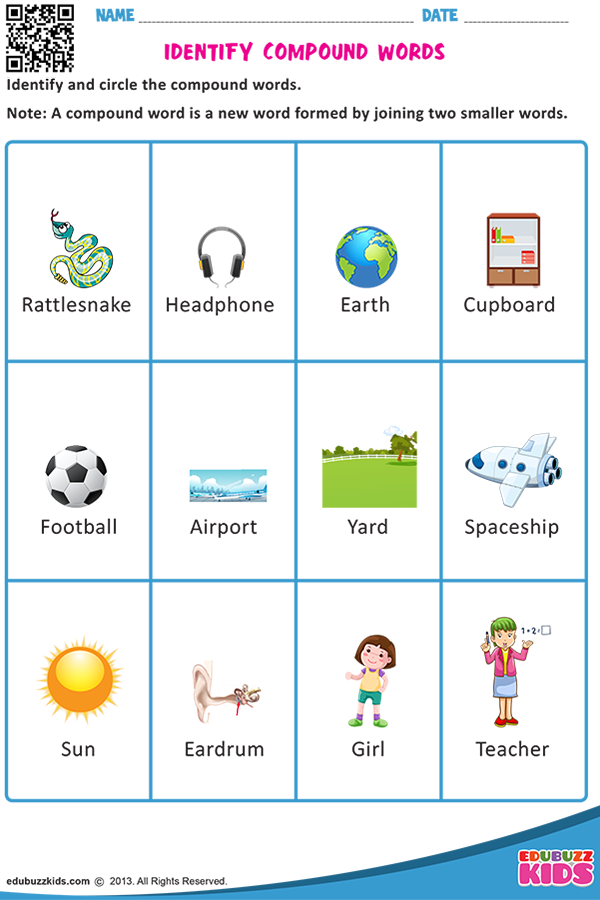 Have students place two short Duplo blocks together on a longer one to make a compound word. If you have very low-level readers, you can simply add pictures. You can have students write the new compound word they created and illustrate it if you want something you can check afterward.
Have students place two short Duplo blocks together on a longer one to make a compound word. If you have very low-level readers, you can simply add pictures. You can have students write the new compound word they created and illustrate it if you want something you can check afterward.
5. Implement self-checking puzzles.
Puzzles are such a great way for students to use their hands and brains while learning. Self-checking puzzles help students immediately see if their thinking is correct or not. Just write a word and draw a simple picture on each side of a notecard. For example, tree and house. Make a unique cut, like a zig-zag, and cut the notecard in half. Create several of these and mix them up.
In my Compound Word Activities Unit, I have this activity already done for you. Plus, there’s a recording page to make it easy for students to jot down their matches and for you to check them.
6. Introduce hands-on games to reinforce learning.
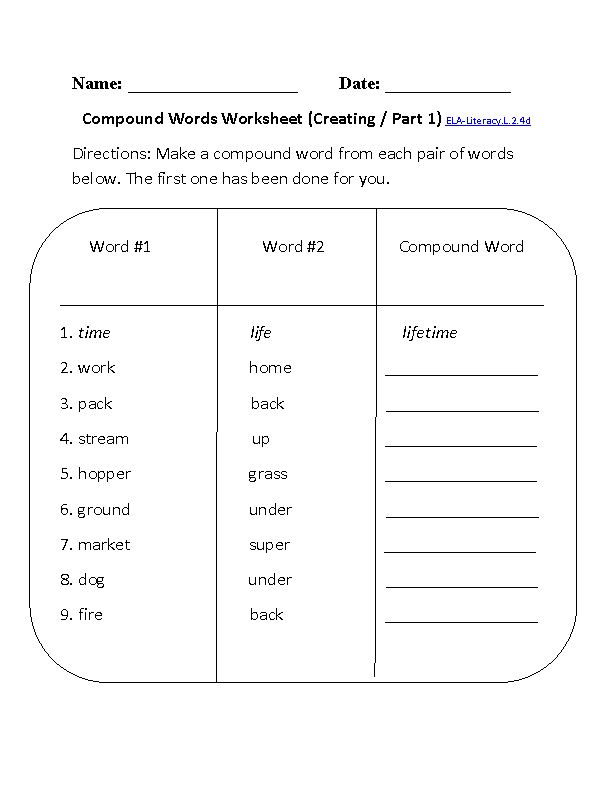
Most students in kindergarten, first grade, and second grade know how to play memory. Add a twist to the classic game with compound words. After you introduce this and model how to play, let students practice. Then, you can use it during morning work or in a word work or game literacy station.
- Make picture word cards for the compound word and its two individual words. For example, treehouse, tree, and house.
- Do this for several compound words.
- Next, flip the cards facedown.
- Students take turns flipping over three cards, saying/reading each one.
- Finally, if they flip over the three cards that go together (tree, house, and treehouse), they get to keep them and get a point.
7. Use online games.
There are several games online that you could use to let students practice identifying and making compound words. If you have iPads, you could use them in literacy stations. Check out what I found on YouTube.
- The Guess the Word Challenge is a video that shows two pictures.
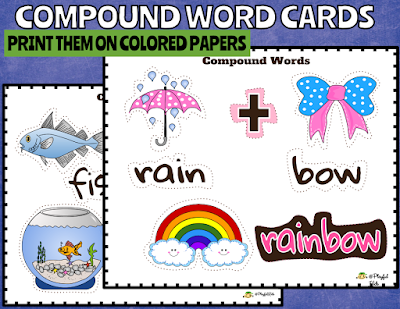 Students have to guess the compound word before the clock countdown ends.
Students have to guess the compound word before the clock countdown ends. - Similarly, The Compound Word Game is very similar. The main difference is this game does have some audio of someone saying the name of each picture, and the other game has no audio.
You can have students play two ways:
- Think, pair, and share the answer. Give a thumbs up or down if their partner got it correct.
- Let students write or draw the answers on whiteboards and hold them up to show you.
8. Sort compound words and not compound words.
Sorting is one of the higher-level compound word activities on Bloom’s Taxonomy. Show some examples of compound words with pictures and words that are not compound words. Have students sort them.
If you want this activity already all planned and done for you, my Compound Word Activities has this activity in it. Students make a pocket book and sort the pictures.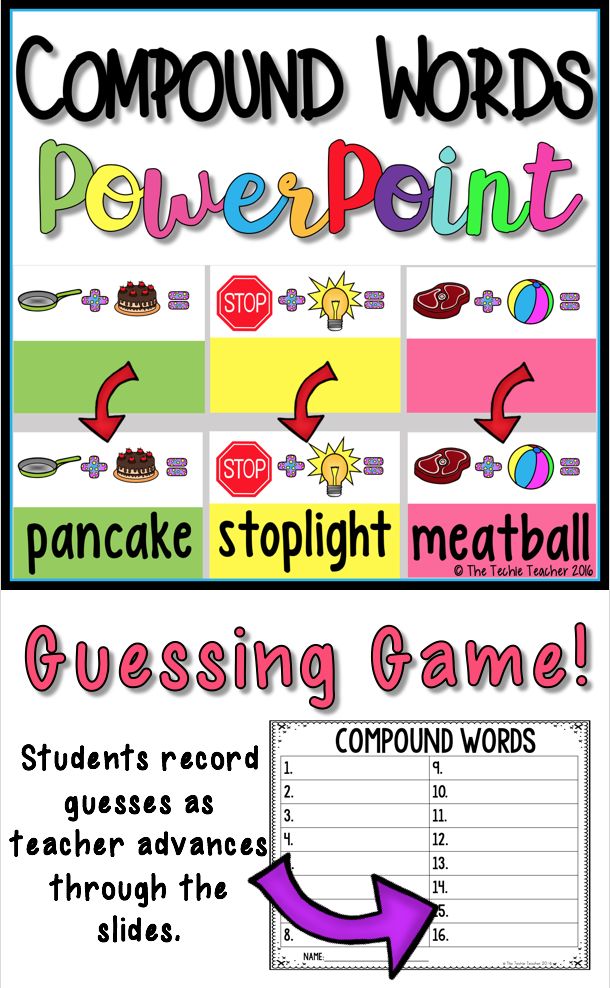 I love sorting this way because it’s interactive, and the students can take the pieces out, mix them up, and sort them again.
I love sorting this way because it’s interactive, and the students can take the pieces out, mix them up, and sort them again.
These eight compound word activities will be sure that the different types of students’ learning needs are met and support your ELL students, too. Remember that with any concept you teach, it’s important to add variety to your lessons and activities. As a result, students will be engaged and learn more effectively.
pin it
Do you have any must-do compound word activities? Leave a comment and let me know!
Shop This Post
Compound Word Activities Unit : This unit has interactive activities to help you teach compound words and help your students master this standard. It includes:
- Fun Compound Word Chant
- Compound Connection Puzzles (18 picture puzzles and recording sheets)
- Compound Connie (character used to help introduce the concept with activities)
- Pocket Book for Compound Word Sort
- Compound Flip Book (creating compound words)
Want to use the latest research to boost your readers during small groups? This FREE guide is packed with engaging ideas to help them grow!
The Essential Guide (+ FREE Downloads)
by Marie Rippel
Compound words are formed when two smaller words combine to form a new word, as in these examples:
mail + box = mailbox
milk + shake = milkshake
note + book = notebook
The resources in this article can help you introduce compound words to your children and make them feel like superheroes for being able to read and spell such long words!
What Is a Compound Word?
Compound words can be lots of fun for young readers and spellers.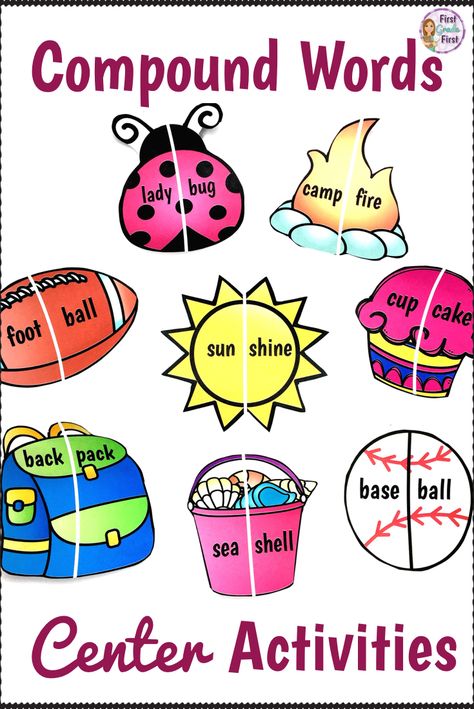 And they are easier to tackle if we think of compound words as two smaller words that are combined to form a new word.
And they are easier to tackle if we think of compound words as two smaller words that are combined to form a new word.
But there’s another important thing to consider when teaching compound words!
When deciding of a word is a compound, remember that the meaning of the compound word relates to the meanings of the two words that combine to form it. For example, a bathtub is a tub you take a bath in. A sandbox is a box you put sand in. An anthill is a hill made by ants, and so on.
Download This Free List of Compound Words
This big list of kid-friendly compound words will be a great resource as you work on this skill together.
Teach How to Look for the Two Smaller Words in the Compound Word
The easiest way to introduce compound words is with letter tiles. Choose a word such as bathtub from the resource list and build it with the tiles.
Explain to your child that the word bathtub has two smaller words in it, and invite him to find those two smaller words. Letter tiles are great for this activity because your child can separate the compound word into two words, like this:
Letter tiles are great for this activity because your child can separate the compound word into two words, like this:
Suddenly, longer words are no longer scary! See why I love letter tiles so much? You can practice this concept with fun words like sandbox, anthill, backpack, and windmill. This is a wonderful method for helping students visualize the words that form compound words.
Games and Activity Sheets for Compound Words
Hands-on games and activities make learning about compound words more fun! Here are three free printables that you can use with your child. The first two activities come from All About Reading Level 1, and the third activity was designed for all reading levels.
“Bird Friends” Activity
Birds of a feather flock together … and in this fun reading activity, birds of a feather make compound words, too! Just have your child select two matching birds and place them side by side on the branch. Each pair of birds makes a compound word!
“Chop-Chop” Activity
Practice compound words with this fun (and safe!) chopping game! Just cut out the knife and the foods, then let your child “chop” each compound word between its two smaller words.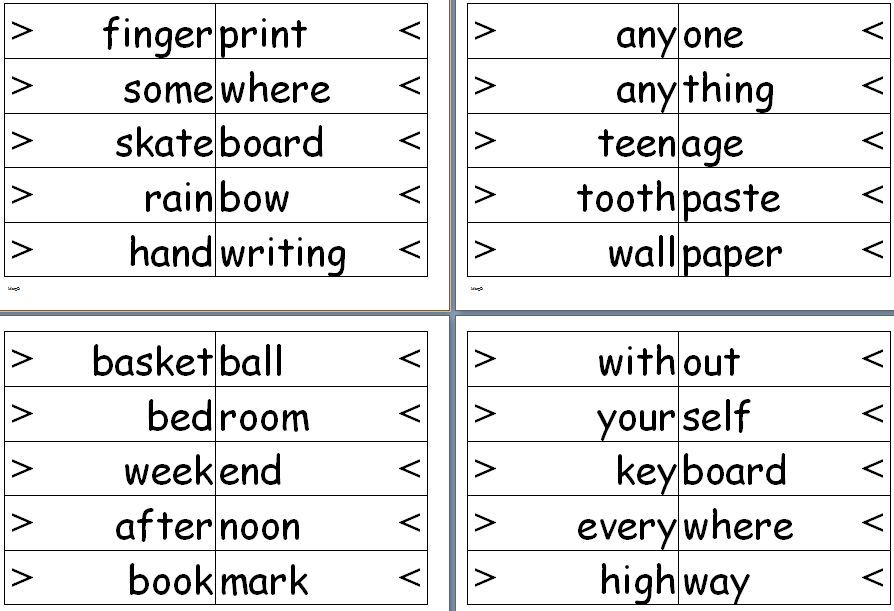 Read each smaller word, and then read the compound word.
Read each smaller word, and then read the compound word.
“Banana Splits” Game
Use compound words to build the yummiest banana split ever in this delicious multi-level reading game. Every player gets an ice cream bowl and a stack of candy covered scoops of ice cream to play with. And the best part? Students of different levels can play together!
Spelling Tips for Compound Words
When your child is spelling, it may not be obvious when to combine two words into one. This process is made more difficult by the fact that there are actually three kinds of compound words. There are closed compounds, which we have been discussing in this article so far. And then there are open compounds and hyphenated compounds.
If your child needs to spell the word ice cream, for example, there is no rule that will help her decide whether this is a closed or open compound word. She’ll just need to determine what “looks right,” and the only way to do that is to have seen it in writing before (preferably multiple times).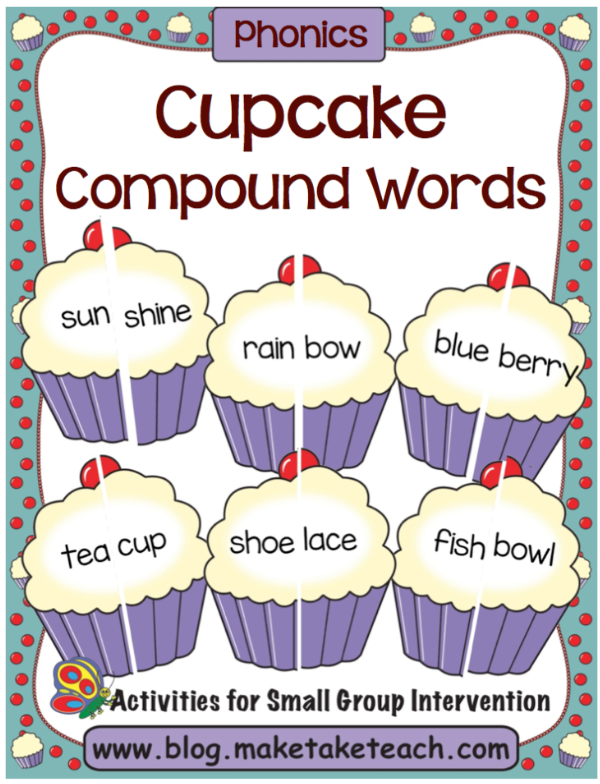 The Practice Sheets in All About Reading and the Word Banks in All About Spelling are excellent tools to do just that.
The Practice Sheets in All About Reading and the Word Banks in All About Spelling are excellent tools to do just that.
Of course, reading word lists isn’t all that exciting. Reading a short story about a sassy cat, on the other hand, is a much more engaging way to practice reading compound words! Here’s the first story with compound words that beginning readers encounter in All About Reading Level 1.
Cobweb the Cat short storyIn this story, young readers encounter fourteen different closed compound words, including bathtub, catfish, and sunset. All of these words are pre-taught through various activities, so even before reading the story, the child has already become familiar with them.
The more times your student sees compound words in print, the easier it will be for him to spell them. And that leads us to our final tip for teaching children to spell compound words…
Provide Oral “Hints” During Spelling Dictation
To increase your child’s awareness of compound words during spelling dictation, provide prompts such as “This next sentence has a compound word.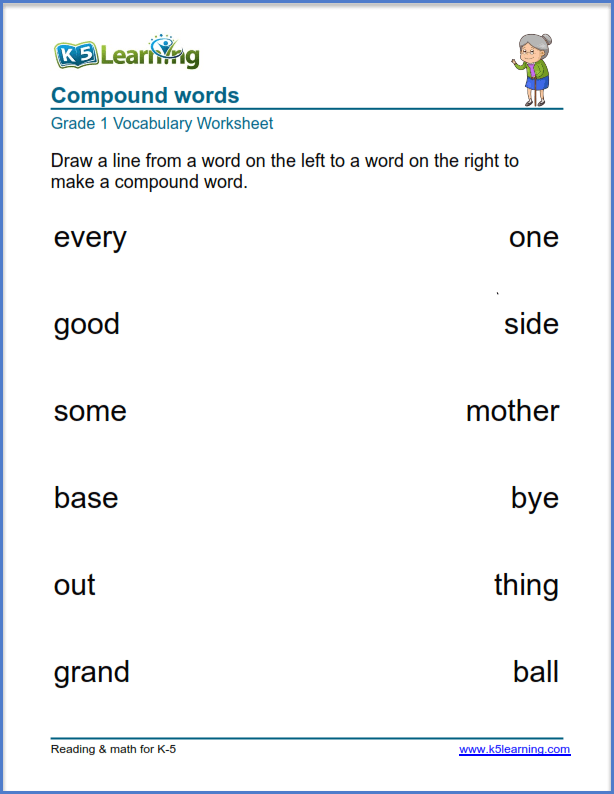 ” After your child sees closed compound words in print a number of times, he’ll begin to get a sense of when to combine two smaller words into one.
” After your child sees closed compound words in print a number of times, he’ll begin to get a sense of when to combine two smaller words into one.
The bottom line when teaching compound words is practice, practice, practice! But make practice a joy by incorporating letter tiles, activity sheets, short reading selections, and spelling dictation “hints.”
What are your favorite ways to practice compound words? Let me know in the comments below!
How to quickly learn words. The Scientific Approach
photo tumblr.com
THREE SCIENTIFICLY BASED METHODS THAT WORK
You learn these words, but there's no point! After a couple of days everything is forgotten.
Use a scientific approach to memorization! We present you three scientifically based methods that will allow you to quickly and permanently memorize foreign words.
Related article:
18 funny English words related to food
HOW MANY WORDS SHOULD YOU KNOW?
First, let's figure out how many words you need to learn in order to begin to understand most of the foreign speech, and to express your thoughts yourself. A five-year-old child living in an English-speaking country uses 4,000-5,000 words, and a university graduate uses about 20,000 words. However, an English language learner only has a vocabulary of 5,000 words, despite years of study.
A five-year-old child living in an English-speaking country uses 4,000-5,000 words, and a university graduate uses about 20,000 words. However, an English language learner only has a vocabulary of 5,000 words, despite years of study.
But there is also good news : A vocabulary of 2,000 words is enough to understand 80% of foreign speech. The researchers came to this conclusion based on the analysis of the Brown Corpus. A linguistic corpus is a collection of texts on various topics.
Interestingly, after you have learned 2,000 words, vocabulary replenishment for each subsequent 1,000 words allows you to increase the amount of understood text by only 3-4%.
HOW TO REMEMBER A WORD QUICKLY?
The first question that interests everyone is how to quickly memorize foreign words?
Scientists have come to the conclusion that information that has an emotional coloring is remembered faster.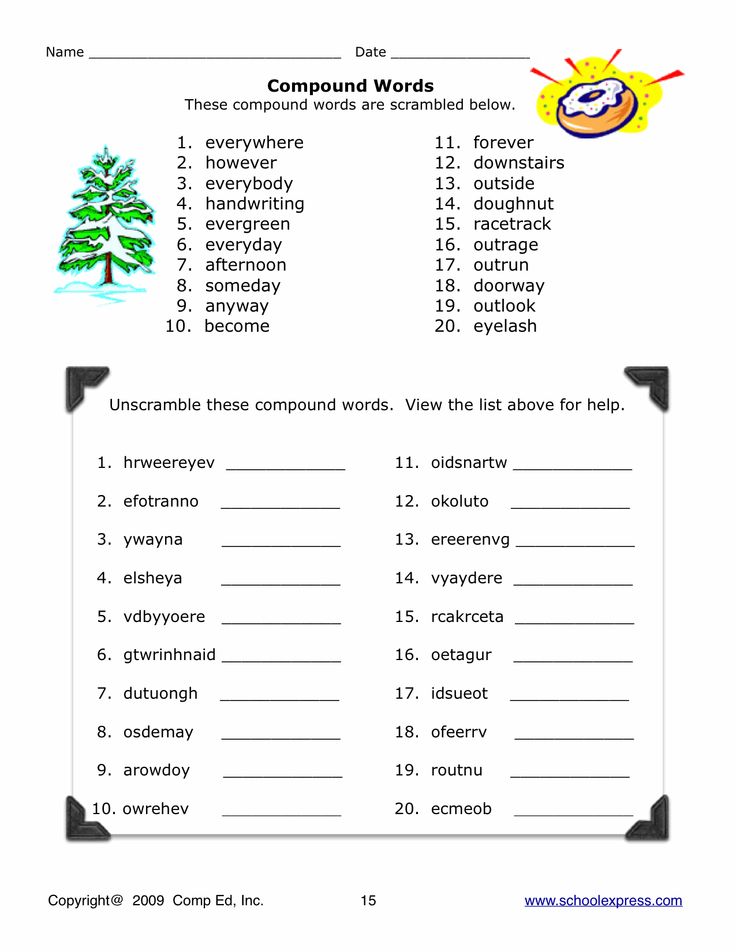 Accordingly, it is a good idea to learn words through games, riddles, movies. I liked the song - do not be too lazy to look at the translation of incomprehensible words. These words will forever be associated with the song you like, which means they will leave an emotional trace in your memory.
Accordingly, it is a good idea to learn words through games, riddles, movies. I liked the song - do not be too lazy to look at the translation of incomprehensible words. These words will forever be associated with the song you like, which means they will leave an emotional trace in your memory.
Excellent technique - mnemonics. Create colorful associations - this will allow you to remember even hard-to-pronounce words. Usage example: the word weather is similar to the Russian word wind, we build a wind-weather pair in our head, remember forever that weather translates to weather. There are special reference books where you can find various mnemonic techniques for memorizing English words. However, it is better to come up with such associations on your own, since our associations and emotions are strictly individual.
Article in the topic:
Infographic: varieties of tea in English + 6 "tea" idioms
HOW TO NOT FORGET A WORD SO QUICKLY?
So, you learned a couple of hundred words, but after a week, about ten of them remained in your memory.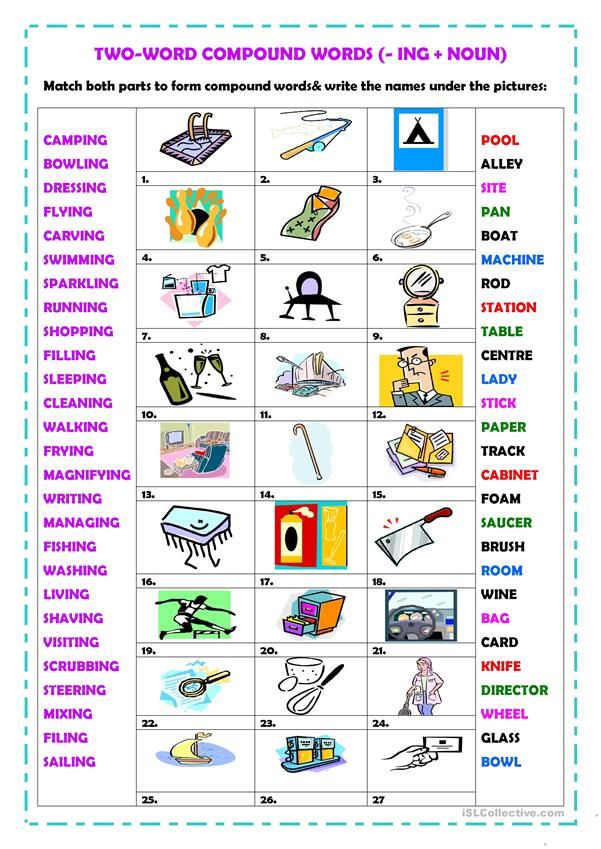 What is the problem? This is due to the existence of short-term and long-term memory. The mechanisms of short-term memory allow you to store information for 15-30 minutes, then, noticing that this information is not used, the brain gets rid of it, as if it were something unnecessary. How can we make it clear to the brain that we really need these words? The answer is repetition. It's like with Pavlov's dog: the light bulb lights up - saliva is released. However, it is released only after 5-10 repetitions of the food + light chain. If food is not served when the light is turned on, the association of the light bulb with food in the dog's brain will be destroyed, and saliva will stop secreting.
What is the problem? This is due to the existence of short-term and long-term memory. The mechanisms of short-term memory allow you to store information for 15-30 minutes, then, noticing that this information is not used, the brain gets rid of it, as if it were something unnecessary. How can we make it clear to the brain that we really need these words? The answer is repetition. It's like with Pavlov's dog: the light bulb lights up - saliva is released. However, it is released only after 5-10 repetitions of the food + light chain. If food is not served when the light is turned on, the association of the light bulb with food in the dog's brain will be destroyed, and saliva will stop secreting.
So how many times does a word need to be repeated in order for it to stably move from short-term to long-term memory?
German psychologist Hermann Ebbinghaus developed the Forgetting Curve, which characterizes the amount of information lost over time in the absence of repetition.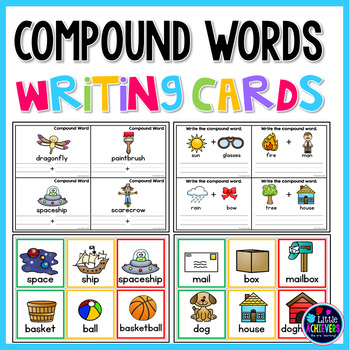 During the first 20 minutes after learning the words, we will already remember 60%, and within 1 hour we will lose more than 50% of the information. Then, over time, more and more information will be erased, and by day 3, only 20% of the information will remain in memory. Thus, if you miss at least one day in repetition, you will not return the forgotten words.
During the first 20 minutes after learning the words, we will already remember 60%, and within 1 hour we will lose more than 50% of the information. Then, over time, more and more information will be erased, and by day 3, only 20% of the information will remain in memory. Thus, if you miss at least one day in repetition, you will not return the forgotten words.
The conclusion is obvious: without repetition, nowhere . Use words in speech, make up stories using new words, play flashcards on your smartphone for at least a couple of minutes a day - all this will help you save the learned words. Otherwise, the time spent on their initial study will simply be wasted.
We suggest using the following repetition schedule:
- 10-15 minutes after learning the words;
- After 50-60 minutes;
- Next day;
- After 1 day;
- After 2 days.
After that, most of the information will be fixed for life.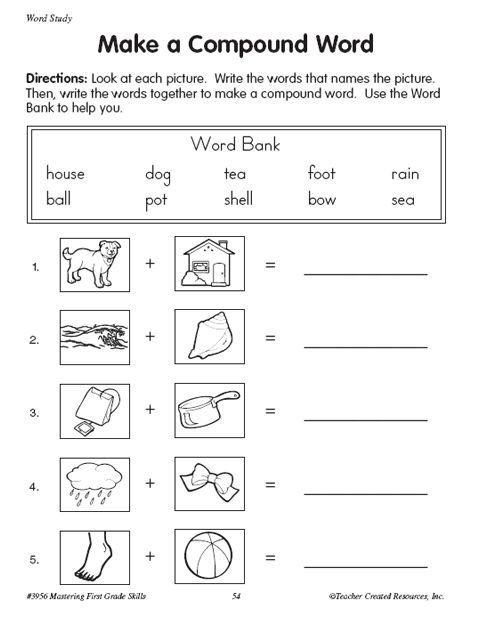
Article in the topic:
Infographics: English words on the topic of work
HOW TO EXPRESS THOUGHTS FASTER?
I really want foreign words to flow from my mouth, without requiring excessive brain tension and several minutes to formulate a phrase. There is an opportunity to accelerate the formation of foreign speech - this is the development of muscle memory. By muscles here we mean the muscles of our articulatory apparatus. These muscles, like the muscles of the legs when riding a bicycle or the muscles of the fingers of a pianist, have a memory that allows you to perform automated movements almost unconsciously.
In order for muscle memory to form, it is important to pronounce words out loud when learning words, making movements with the tongue and lips. It is also useful to simultaneously present an image of the subject being studied. Over time, you will no longer think about what word to say - the muscles will do it automatically.
Thus, the correct organization of the work of the brain in the formation of short-term, long-term and muscle memory will allow you to quickly and permanently replenish your vocabulary.
Good luck with your studies!
Elena
Fun English for kids and adults!
Compound words in English
In English, two groups of words can be distinguished, which are called compound. The first includes words whose pronunciation is very different from the spelling. The second group consists of complex English words formed by adding several full-fledged simple words.
Words with difficult pronunciation
This group of vocabulary is difficult for language learners both in terms of pronunciation and writing. When studying these words, it is important to pay attention to the unpronounceable consonants, the peculiarities of reading vowels, and, in general, the discrepancy between the written form and the sound of the words. The most difficult words in English (examples) are presented in the table.
The most difficult words in English (examples) are presented in the table.
| Wednesday Wednesday February
August check withdraw
architecture geography
research review specialist knowledge thistle clothes illegitimate invulnerability prejudice hierarchical entrepreneurial appointment employer
confidence guided tour government
attainable performance opportunity persuade harass exaggerate success accommodation embarrass millennium | [ˈwenzdɪ] [ˈfebrʊərɪ] [ɔːˈgʌst] [ʧek] [tjuːˈɪʃn fiː] [wɪðˈdrɔː] [ˈɑːkɪtekʧə] [ʤɪˈɔgrəfɪ] [rɪˈsɜːʧ] [rɪˈvjuː] [ˈspeʃəlɪstˈnɔlɪʤ] [θɪsl] [kləʊðz] [ɪlɪˈʤɪtɪmɪt] [ɪnvʌlnərəˈbɪlɪtɪ] [ˈpreʤʊdɪs] [haɪəˈrɑːkɪkl] [ɒntrəprəˈnɜːrɪəl] [əˈpɔɪntmənt] [ɪmˈplɔɪə] [ˈkɔnfɪdəns] [ˈgaɪdɪdtʊə] [ˈgʌvnmənt] [əˈʧiːvəbl] [pəˈfɔːməns] [ɔpəˈtjuːnɪtɪ] [pəˈsweɪd] [ˈhærəs] [ɪgˈzæʤəreɪt] [səkˈses] [əkɔməˈdeɪʃn] [ɪmˈbærəs] [mɪˈlenɪəm] | Wednesday February August check tuition fee withdraw, withdraw (money) architecture geography research review, review professional knowledge thistle clothes illegal invulnerability prejudice hierarchical entrepreneurial meeting, reception employer confidence excursion government reachable performance possibility convince disturb exaggerate success housing, accommodation embarrass millennium |
Compound words
Many English words are formed by adding several simple words together.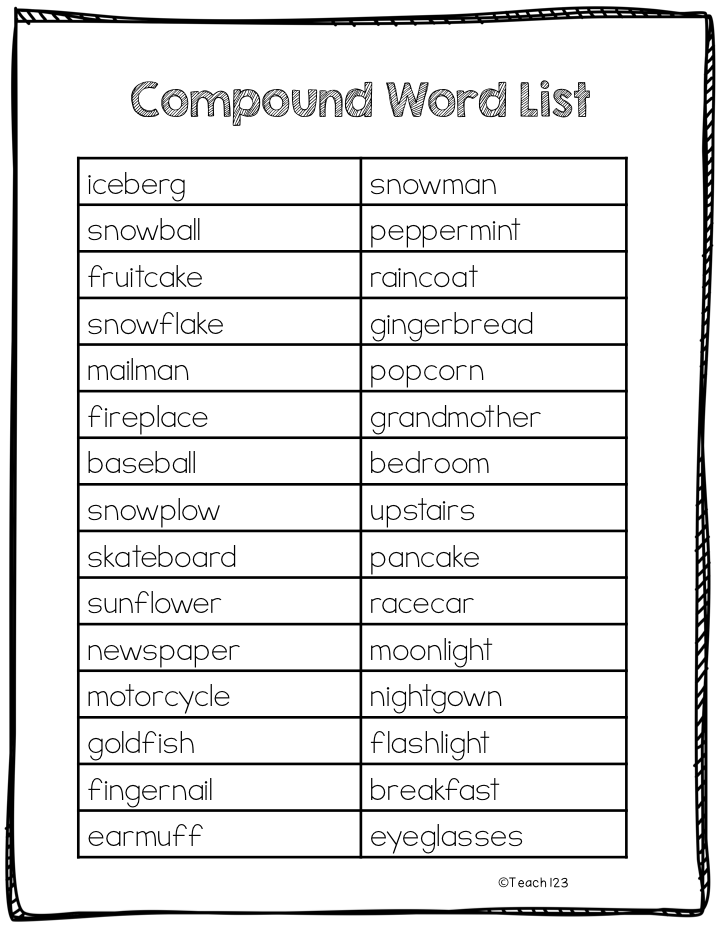 Often their translation coincides with the meaning of each of the simple words, composed in one combination. Sometimes the translation differs from the literal, but is very close to it. Therefore, compound words are easier to remember than simple polysyllabic ones.
Often their translation coincides with the meaning of each of the simple words, composed in one combination. Sometimes the translation differs from the literal, but is very close to it. Therefore, compound words are easier to remember than simple polysyllabic ones.
The most popular English compound words with translation and transcription are presented in the table. Please note that they can be written together or separately or with a hyphen.
| wheelchair wineyard mother-in-law editor-in-chief dragonfly quicksand breakwater hanger-on telltale wheeler-dealer passer-by / passerby attorneygeneral haircut whitewashing onlooker ticketinspector breakthrough
| [ˈwiːlʧeər] [ˈvɪnjəd] [ˈmʌðəɪn-lɔː] [ˈedɪtəɪnʧif] [ˈdrægənflaɪ] [ˈkwɪksænd] [ˈbreɪkwɔːtə] [ˈhæŋəon] [ˈtelteɪl] [ˈwiːlə ˈdiːlə] [ˈpɑːsəˈbaɪ] [əˈtɜːnɪˈʤenərəl] [ˈhɛəkʌt] [ˈbreɪkθruː] [ˈɔnlʊkə] [ˈtɪkɪtɪnˈspektə] [ˈbreɪkθruː] | wheelchair vineyard mother-in-law chief editor dragonfly quicksand breakwater obsessive admirer talker, gossip rogue, schemer passer-by Attorney General haircut whitewash spectator, observer controller breakthrough |
Tip: How to learn words
Among the most effective ways to memorize difficult English words are the following.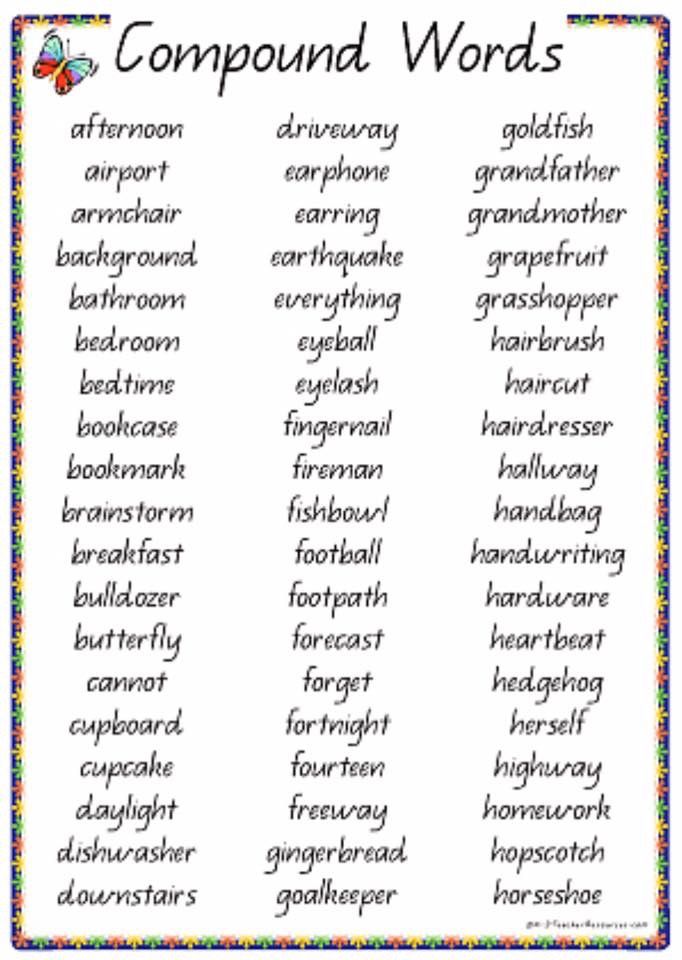



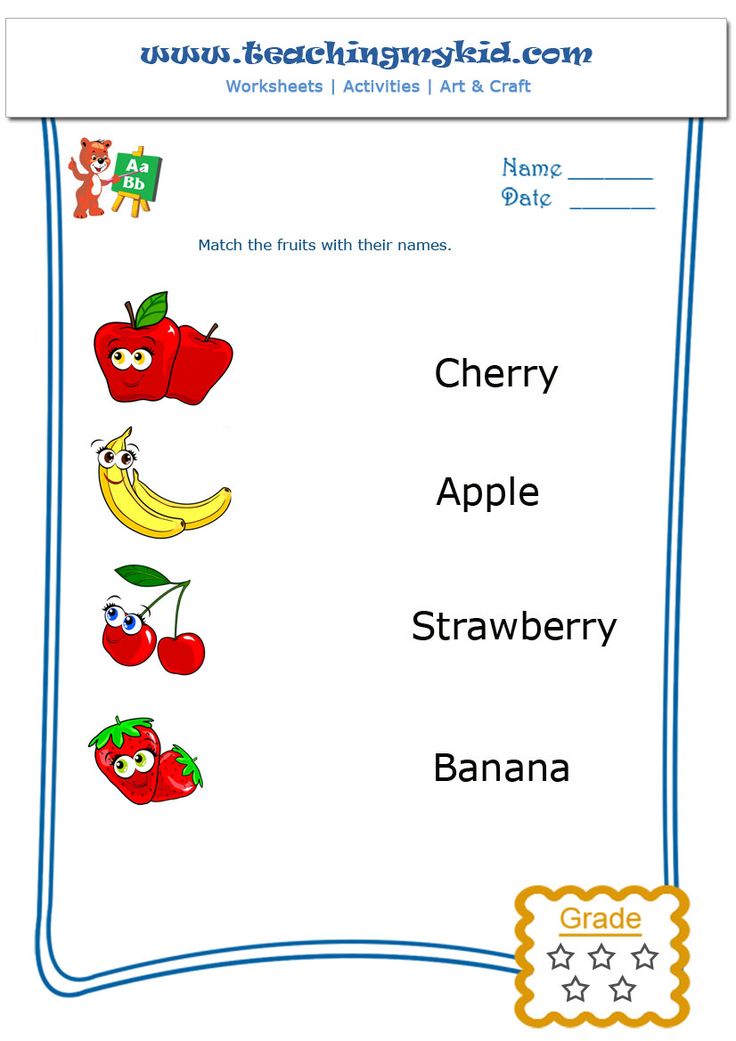
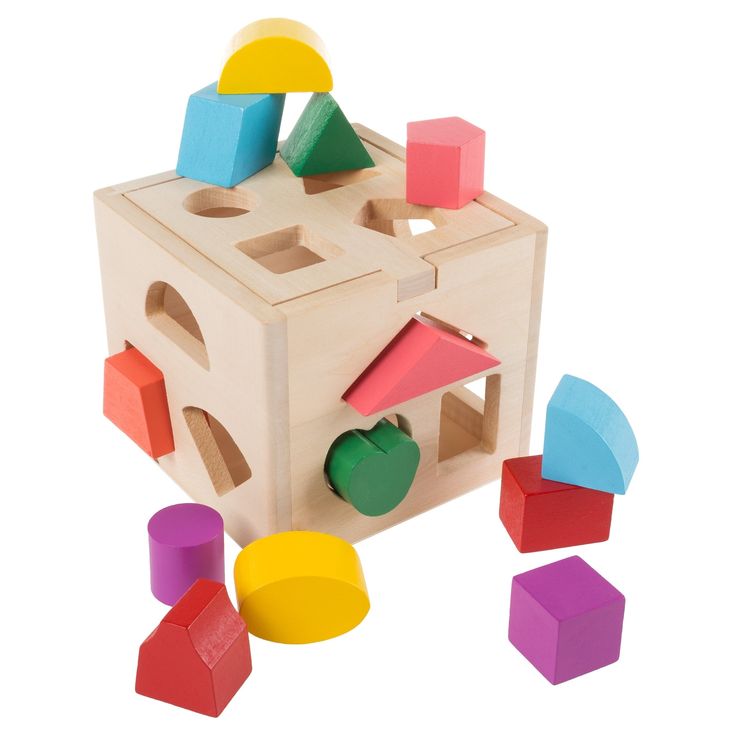
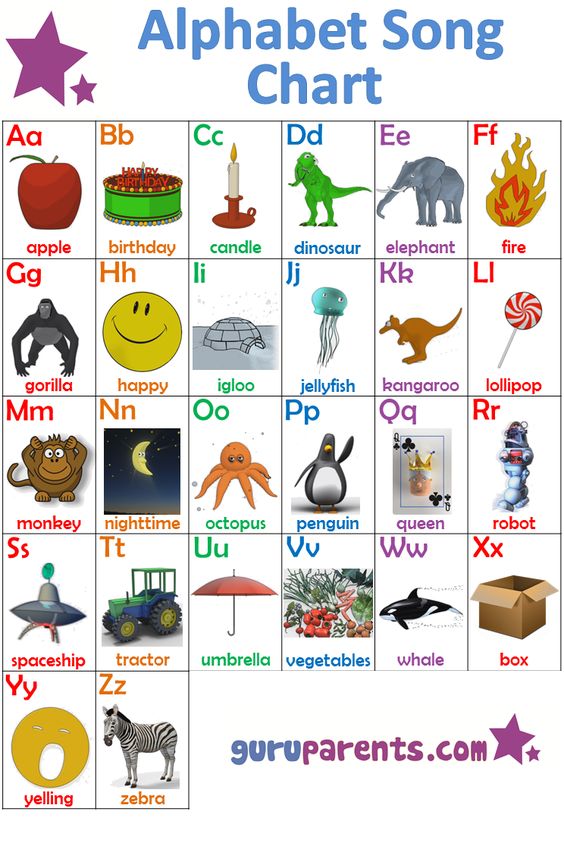
.jpg)
